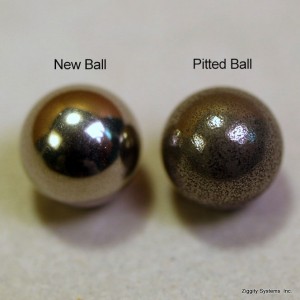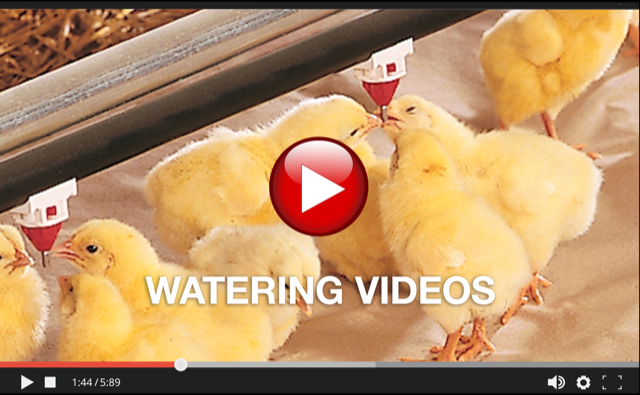 Corrosion of drinker components can be an expensive problem for poultry operations. It pays to monitor for signs of drinker corrosion, particularly if aggressive sanitation programs have been implemented where above normal amounts of chlorine and/or acidifiers are being used on an ongoing basis
Corrosion of drinker components can be an expensive problem for poultry operations. It pays to monitor for signs of drinker corrosion, particularly if aggressive sanitation programs have been implemented where above normal amounts of chlorine and/or acidifiers are being used on an ongoing basis
Ziggity drinker components — trigger pin, seat, ball and metering pin, are all made of robust stainless steel and durable plastic, designed for longevity and an inert, non-corrosive reaction with water. This is the same kind of high quality steel used in food and beverage manufacturing and processing, such as brewing and dairy, because of its durability, its resistance to corrosion, its non-effect on taste, and its ability to keep the beverage or food free from contamination.
Stainless steel’s non-corrosive properties stem from a passive layer of chromium oxide that prevents the steel it covers from contacting corrosive agents. However, those maintaining stainless steel equipment must be careful about what cleaning and sanitizing agents they use, as some agents can break down the oxide layer, which will lead to corrosion. These agents include popular and aggressively-used disinfectants like chlorine and bleach. Once the protective chromium oxide layer is broken down, pitting and rust can occur on the drinker’s ball and seat, compromising the seal and creating leaks. This creates wetter litter, which promotes pathogen growth and excessive ammonia release that can harm and stunt the growth of birds.
The goal obviously is to use chlorine, acidifiers etc., but not at levels that will lead to drinker damage and wet litter. And there is a simple program that any producer can use to do so. Simply keep an extra drinker or two that came with initial installation in marked plastic sealed bag and labeled as “Control Drinkers.” Periodically remove several drinkers from your drinker line (preferably closest to the regulators) and compare the shut off ball of the drinker in use with the Control Drinkers. The shut off ball surface of both the used and the control drinker should be identical – shiny and reflective. If that is the case no need to change the existing program. However if the surface of the ball of the used drinker is less shiny or has become dull, then the oxide layer mentioned above has been compromised and drinker will have a slow leak. A very dull surface will mean a fast leak.
Drinker line sanitation is important for removing biofilm and killing harmful bacteria. But the goal is to use these agents (chlorine, acidifiers etc.), but only to the level or concentration to get the killing action, not to a level that the all-important oxide layer that protects stainless steel becomes corroded.
For more information on best practices for safe, corrosion-free biofilm removal visit www.Ziggity.com or poultrywatering.com.













